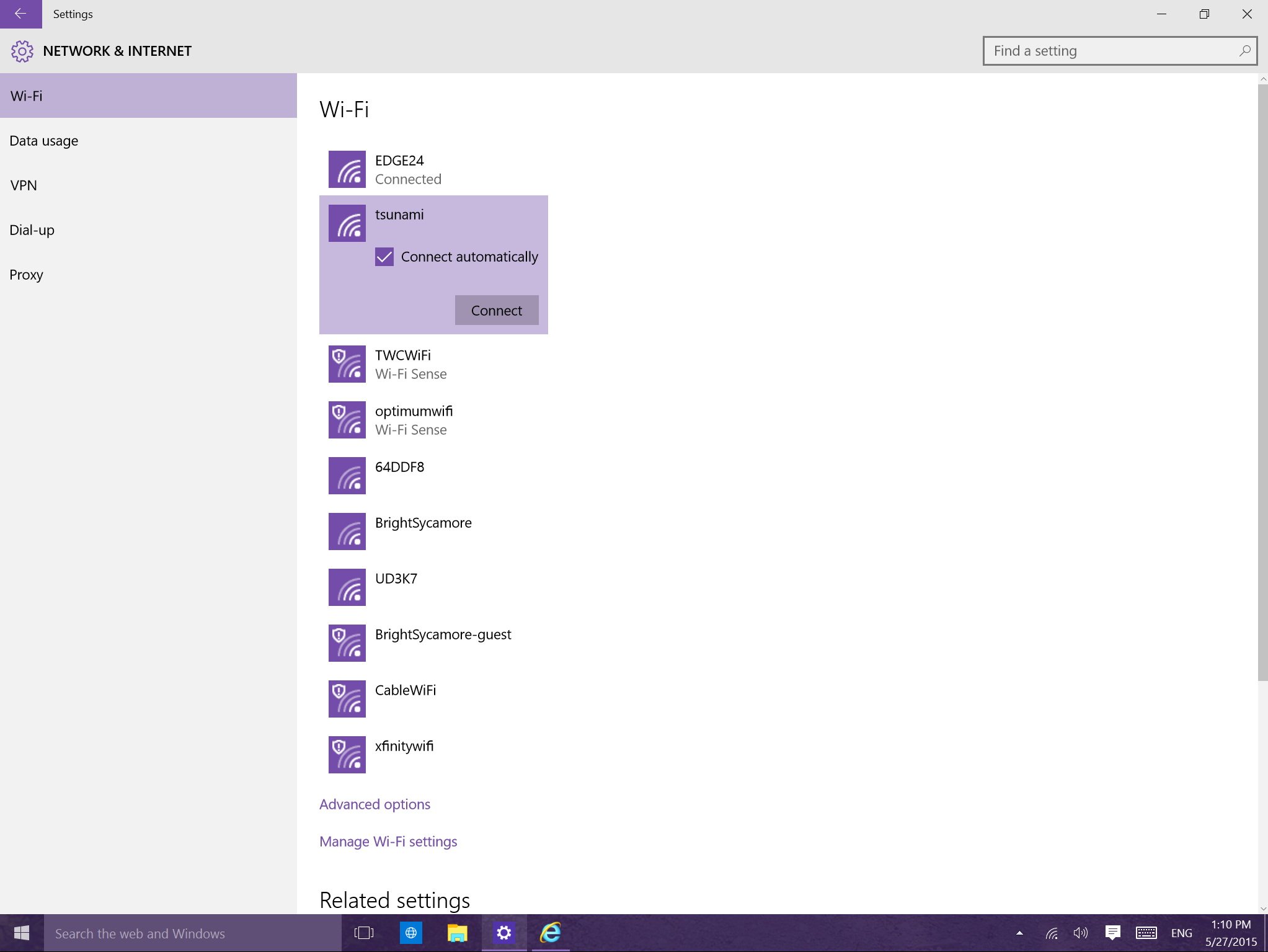Documents And Settings Is Not Accessible Windows 10
I can't access documents and settings even when logged in as admin. I need to do this b/c a) easiest way to transfer settings for some programs is to copy its application data folder from XP over and 2) many programs have configurable options that are not exposed by the GUI; the only way to change them is by editing an xml or ini in documents and settings.
While many people will balk and wish that Microsoft wasn’t slowly burying the trusted Control Panel, the Settings app has grown into a key feature of Windows 10. It’s the launchpad into controlling your system – from adding devices to controlling users and gaming features. If Settings stops working, Windows becomes pretty dysfunctional.
So if your Settings app is stalling or just not opening in the first place, here’s a bunch of fixes that should get it back to working order.
Related: Windows 10 Start Menu Search Not Working? Here are Some Fixes

A Simple Solution from Our Readers
Sometimes, the best solutions are those that seem too simple to be true. But in tech, that’s often the case, so kudos to our reader nico for leaving a comment with a solution that several other readers have reported back as working.
Here’s the fix:
1. Click the Start button, right-click the cog icon that would normally lead to the Settings apps, then click More and “App settings”.
2. Finally, scroll down in the new window until you see the Reset button, then click Reset.
Settings reset, job done (hopefully).
Alternative Ways to Open Settings
If you’re just looking for a quick workaround to a misbehaving Settings app, then your best bet could be to try and open it another way.
One method is to press Win + I to try and open the Settings app.
Alternatively, you can click the Action Center icon in the taskbar (the speech bubble at the bottom-right), and then click “All Settings.”
If these methods don’t work, or if your Settings app still can’t be accessed the normal way via your Start menu, then it’s time to try something a little more involved…
Reinstall and Re-Register Windows Apps
The Settings app in Windows 10 is counted among the official built-in Windows apps, so reinstalling it (along with every other Windows 10 app) should fix whatever problems you may have with it.
To do this, open the PowerShell (just type “powershell” into the Start menu Search, then right-click it and “Run as administrator”) and enter the following command:
That will re-register and reinstall all Windows apps, hopefully getting the Settings app (and others) back to full working order.
Run an SFC Scan
Before trying the more elaborate method of fixing the Settings app, here are a couple of quick fixes that might do the job:
- Scan your hard drive for errors – go to the Start menu, type
cmd, open the command prompt, then typesfc /scannow - That failing, you should try downloading the Windows Update Troubleshooter and see if that helps.
Create a New Windows User
If you still can’t open the Settings app, then it’s time for the more radical solution of creating a new administrator account and transferring your files over to it. Seeing as you can’t use the Settings app to create a new account, you can instead use the Microsoft Common Console Document if you have Windows 10 Pro.
1. Click Start and type lusrmgr.msc. In the Common Console Document, click Users, right-click users, then “add new user.” Enter your info, then sign out of your current account and into your new one either through the Start menu or Ctrl + Alt + Del.
If you have Windows 10 Home Edition, then you’ll need to create a new user through the command prompt instead.
Click the Start menu, type cmd, right-click Command Prompt, and then click “Run as administrator.”
In the Command Prompt type the following command but with the username and password that you want to create for the new administrator account:
You should see the message “The command completed successfully” to inform you that the account has been created.
2. Next, go to “Control Panel -> User Accounts -> User Accounts -> Manage another account.”
3. Select the new account you just created, “Change the account type,” then click “Administrator” in the new window, followed by “Change Account Type.”
The new user is now the administrator.

4. Sign out of your current account and into the new user account. Try accessing the Settings app, and it should now be working.
The next step is to transfer your files from your old Windows account to your new one.
Go to the system hard drive (where Windows is installed) in File Explorer, click View in the tab at the top, then tick the “Hidden items” box.
Navigate to your old user account in File Explorer (C:/Users/old account name by default) and double-click it. You’ll see the following prompt.
Click Continue, enter your account password when prompted, then copy and paste all the files from that account to your new one (located at C:/Users/newusername by default).
You’ll see a message asking if you want to merge the folders from your old account to your new one. Click Yes.
Conclusion
It’s not simple, but creating a new Windows account is sadly the best workaround to this problem that’s managed to persist for some despite patches that have been released to tackle it. It’s worth stressing again that you should try the two simpler solutions at the start of this article before going through the hassle of creating a new account.
This article was first published in September 2016 and was updated in April 2019.
The Complete Windows 10 Customization Guide
In this ebook we’ll be exploring the multitude of options to fully customize Windows 10. By the end of this ebook you’ll know how to make Windows 10 your own and become an expert Windows 10 user.
PC Settings, introduced first with Windows 8, has been rebranded as Settings in Windows 10. Microsoft has completely overhauled the Settings app to make it easier to use and include new settings.
While the classic Control Panel is still exist in Windows 10 and we need to navigate to the Control Panel to access some settings, most of the Settings can be found under Settings app. In fact, many of the newly added settings and options are available only in the Settings app.
Settings to personalize the Start menu or screen, lock screen and many other options are available in Settings app only. Additionally, the Settings app allows you pin your favorite settings or settings that you need to access very often to the Start menu or screen.
The design language of the Settings app goes very well with overall design of Windows 10. All settings and options have been placed into nine different categories: System, Devices, Network and Internet, Personalization, Accounts, Time and Language, Ease of Access, Privacy and Update and security. Navigate to category to view sub-categories.
In fact, in many ways, the Settings app is much easier to use and navigate than the classic Control Panel.
Although Settings app icon is pinned to the left of the Start menu or screen by default for quick access, following are some of the lesser known ways to open Settings app in Windows 10.
Method 1 of 6
Open Settings with keyboard shortcut
This is the easiest way to launch Settings app in Windows 10.
C Is Not Accessible
Step 1: Simultaneously press Windows logo and I keys (Windows + I) to quickly open Settings in Windows 10.
Method 2 of 6
Open Windows 10 settings from Start
Step 1: Reveal the Start menu or screen by pressing Windows logo key or clicking (tap if you’re on a touch device) the Start button on the extreme left of the taskbar.
Step 2: On the left-side of the Start, simply click or tap the Settings icon to launch the same.
Method 3 of 6
Launch Settings app from the search
Step 1: Open Start menu or screen.
Step 2: In the search box (which can be quickly accessed by pressing Windows + C), type Settings and then press Enter key.
Method 4 of 6
Quickly open personalization section of Settings
Step 1: Right-click on desktop to open the desktop context menu.
Step 2: Click or tap Personalize option to open personalization section of Settings.
Method 5 of 6
Open Settings app from Action Center
Step 1: Click on the Action Center icon in the taskbar and then click All Settings tile to open Settings.
Method 6 of 6
Pin Settings app to taskbar for quick access
Step 1: Launch the Start menu or screen by either clicking the Start (Windows icon) button on the taskbar or pressing the Windows logo key on the keyboard.
Step 2: Right-click on the Settings icon in the Start menu/screen, and then click Pin to taskbar option. That’s it!
If you have issues with opening Settings, refer to our Settings not opening in Windows 10 guide.